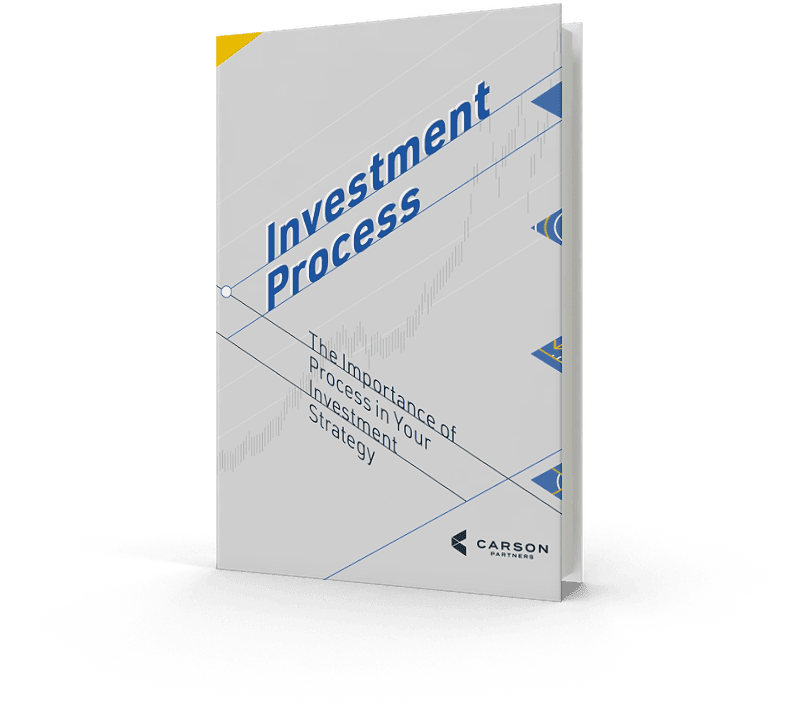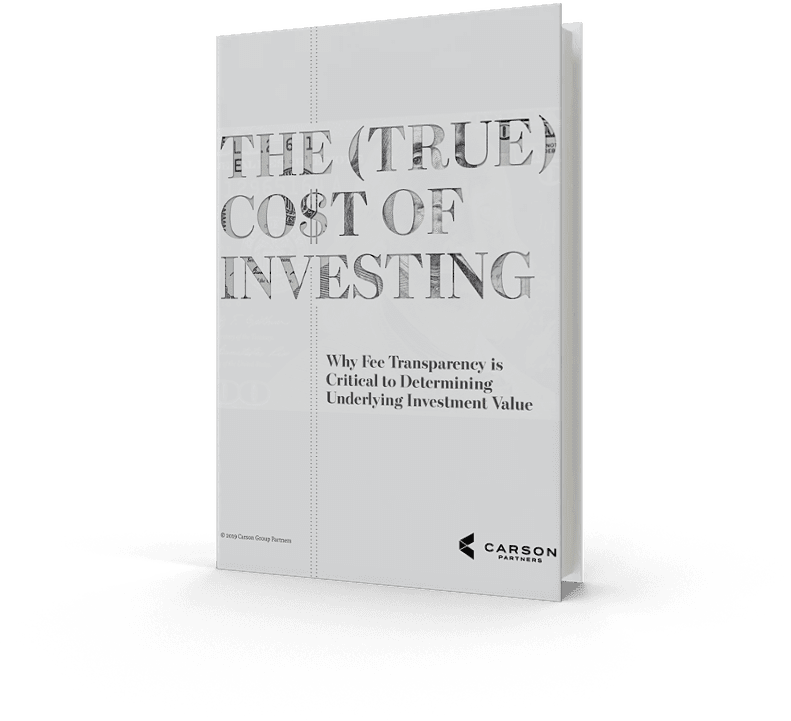Investment Management
Money Doesn’t Have to be Complicated.
By leveraging a disciplined investment process, you receive transparency of information, seamless proactive service and the trust and accountability you need to pursue your financial objectives.


Download a Complimentary Resource

Investment Process

The (True) Cost of Investing
In-House Investment Support
Using a combination of the latest technology and our team of financial professionals, we regularly monitor your portfolio to ensure you are taken care of. While working with your advisor, you will build out your model and continually evaluate your portfolio in order to help you towards your goals.
How Do I Know Which Investment Strategy Makes the Most Sense for Me?
There are many factors that affect choosing an investment strategy. The first set of factors begins with you, our client. Our disciplined discovery process is key to understanding the right investment strategy for your specific situation. Once we have the answers from our clients, we begin to think about the second category of factors which involve the overall health of the economy.
There are many factors that affect choosing an investment strategy. The first set of factors begins with you, our client. Our disciplined discovery process is key to understanding the right investment strategy for your specific situation. Once we have the answers from our clients, we begin to think about the second category of factors which involve the overall health of the economy.
Here are common questions we ask as we walk through the investment planning process:
- What is the goal of the funds? Are they to be used now, at some point in the future, or are they funds you would like to leave as a legacy?
- What are the expectations you have for these funds when it comes to risk and reward?
- What part of your portfolio do the funds we are investing represent? What percentage do they represent in your liquid portfolio and overall portfolio?
- Are the funds qualified for tax deferral?
- What is your comfort level with investing, or how much investment expertise do you have?
The initial discovery process has to be thorough, which is why top financial advisors will include financial planning, not just investment management, as part of the services they provide to their clients. We believe all of our clients should have a financial plan, which is why we view it as the skeleton of the process.
Once we get to know our clients and we have walked through the basics, we decide whether we need to create the asset allocation plan or simply find the spot in which the funds we are going to invest fit within an already established plan. To determine our path, we ask ourselves:
- What is the current state of the domestic and global economy?
- What is the state of the local economy?
- Where are we in the business cycle?
- How are certain industries and sectors performing relative to each other?
- What is our team’s overall expectation of the market?
By combining the client factors and economic factors, we are very comfortable to make the asset allocation decisions. This is when we determine the answer to one very important question:
Do I need to make an allocation to irreplaceable capital?
Irreplaceable capital is the amount of money we must protect from a downturn in the market. This is different than clients not wanting to lose money; no one likes to lose any money. And while that seems obvious, there are reasons why some may overreact to investment losses.
- Emotionally, we all feel losses more than wins.
- No. 1 is not only an emotional response but also a logical response. If you lose 20% of $1 million, or $200,000, you will have $800,000. If you only earn a 20% return on the $800,000, you will have $960,000! So you need a 25% return on your money to get back to the original investment. You need more money to get back to where you started. Feel that discomfort?
Irreplaceable capital is money that must be preserved as much as possible because if it’s not, you may suffer a major change in lifestyle, which could even change the entire financial plan.
Once we have made a choice on irreplaceable capital, we then need to go back to our client factors. Do you need the income from the portfolio in the near future? If so, then we will choose a strategy which provides income. We may choose a combination of the tried and true dividend paying stocks, some capital appreciation and bonds. We may also incorporate more advanced investment strategies that require very experienced management and trading.
Some clients may choose an allocation of growth and alternative investments because of the potential for return and diversification. These two allocations may be a smaller part of the portfolio or a larger part, this all depends on timing. We may view domestic investments as more or less risky, and we may use global investment strategies to ensure we have diversified investments in the portfolio. The key here is to educate and prepare clients regarding the added risk.
Time plays a critical role in developing strategies for retirement. During retirement planning sessions, you may be in the first stage of accumulation and have recently began to save and invest. In this situation, we may start with a more growth oriented strategy approach. However, this all depends on the answers to the initial client questions. Just because you recently started investing or you are a younger person, it doesn’t mean we automatically put you in a growth strategy and send you on your way.
If you are approaching retirement age, we may choose to sell growth investments. Let’s pretend we have a couple of great years in the market, we may save two years’ worth of funds needed to cover fixed living expenses and move them into an irreplaceable capital strategy to preserve your wealth in case there’s a market downturn the year you retire. It will allow us to preserve a cushion of time in which we don’t have to sell other shares at a lower price point.
When it comes to strategy selection, it is important to keep in mind the two categories in building a disciplined investment process. Combining investment management and financial planning provides us with guidance to create the right roadmap. We must focus on both the client category factors as well as the economic factors and work with each in tandem to create the best investment strategy for you.
This content is for general information only and is not intended to provide specific advice, an endorsement or recommendations for any individual. No strategy assures success or protects against loss. To determine what is appropriate for you, consult with an advisor. Alternative investments can be volatile and you should be aware that you may lose all or a portion of your investment. Additional risks are associated with international investing, such as currency fluctuations, political and economic stability, and differences in accounting standards. A diversified portfolio does not assure a profit or protect against loss in a declining market. Asset allocation cannot eliminate the risk of fluctuating prices and uncertain returns.

